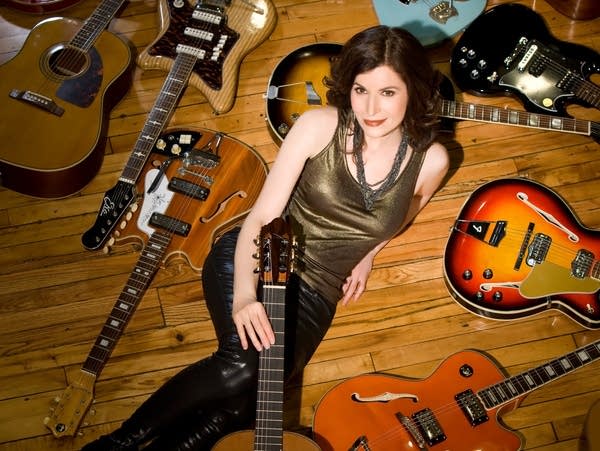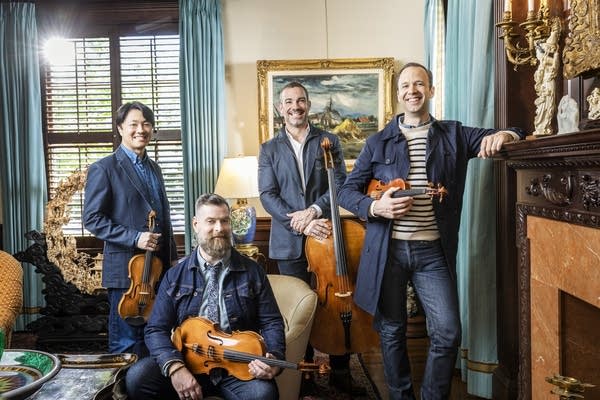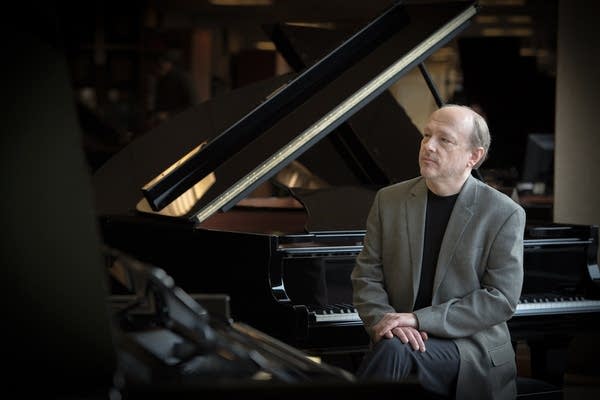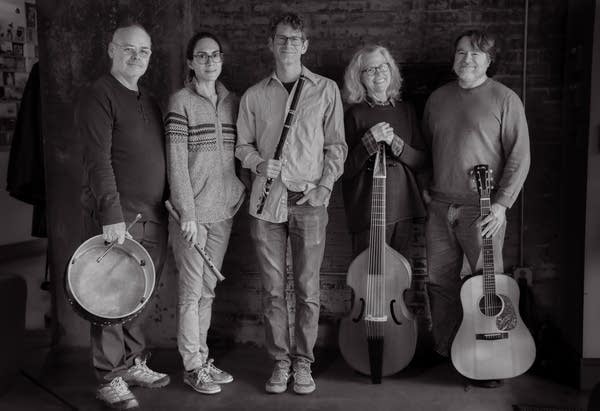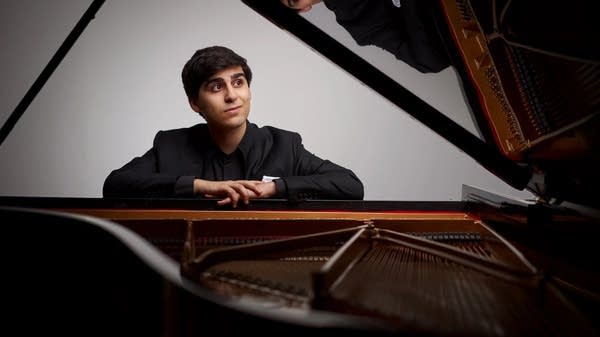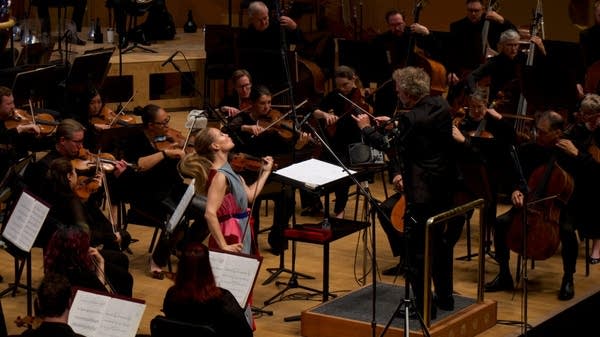Sarah Willis — Mozart y Mambo: Cuban Dances (Alpha) Jump to giveaway form
When Sarah Willis travelled to Cuba two years ago to record Vol. 1 of her three-part series Mozart y Mambo, she wanted to make music and to make a difference. Thanks to profits from that first album, members of the Havana Lyceum Orchestra now have new instruments, and you can hear the difference those instruments make on Mozart y Mambo, Vol. 2, which was recently released.
“Mozart y Mambo has become more than just an album. It's a real project. And we're looking after younger players in Cuba and trying to help them get better instruments and play in the Havana Lyceum Orchestra. So we're doing the same with album two. It's a lot of fun, and it's lovely to see how generous people are.”
You start off the recording of Vol. 2 with Mozart's Horn Concerto No. 2. What made you decide to begin with this specific piece?
“Recording that [concerto] in Havana with the Havana Lyceum Orchestra and seeing them dance this Mozart, because they literally dance when they play. I thought it could start the album really well, because we've we've called it Mozart Y Mambo: Cuban Dances in a reference to the Horn Concerto that's on the album. But I thought Mozart No. 2 was the most danceable of them all. Also, it's in the key of E-flat. And E-flat is a bit of a happier key for me than the first Concerto in D, and D is a little ‘fumbly’ on the horn, so we put that in a bit later.”
Concerto No. 1 also appears on this recording. It’s a piece that requires a lot of slow practice with the metronome. Can you talk about why that is so critical to this work?
“When you're playing in E-flat, you use a lot of your first and second fingers. Now, when you're playing in D, you use your second and third finger. Everyone listening to this, try wiggling your third finger. And now the ring finger. It's slower, isn't it? [It’s the same for us when] we are trying to play, like in the first movement of the First Concerto on a natural horn. For all of us, modern-day horn players, Mozart Concerto No. 1 means a lot of third finger work. And I had to really [practice]; it's like training my fingers for the ‘Horn Olympics.’”
The music of Mozart frames Vol. 2, and nestled in the middle is a landmark original work. The original idea was to create the first Cuban Horn Concerto, but it really turned out to be more of a suite of dances. Talk a little bit about this suite and how it's also created this wonderful map of Cuba's musical heritage.
“It's all very well mixing Mozart and mambo together and doing this fusion that we love so much. But I really wanted to do something for future generations of horn players, and I also wanted to find out more about Cuban music. So each of these six dances [are] completely different, and I'm so happy that I have these six young composers. I mean, for me, it's a little bit like … a young version of the Buena Vista Social Club.
“I still didn't feel like I was qualified to do these dances justice because I've heard Cuban music. It's really easy and loose and you just [have to] feel it in your body. And I was going, pa pa pa pa pa pa pa. And I called on one of the composers to help me. He was in Germany at the time, Richard Egues, and he was like, ‘Yeah, you play really good horn, but that's not Cuban! What are you doing? Sing it to me.’ So, we sang it and it got a bit better. And [then] he said, ‘I'm sorry, “chica,” you're going to have to dance it.’
So he got me up out of my chair and we literally danced all these different dances, and I spent two or three months really learning these dances.”
The recording sessions for this release took place in a church, and one of those late-night sessions produced a piece that's kind of a surprise ending to this recording. Can you talk about that?
“When I was creating this with the arranger Edgar Olivero, who's a Cuban who now lives in Spain, I said, ‘Can you make it funny? Who should be my Papageno?’ And he came up with the idea of the baritone saxophone, which is one of my favorite instruments of all time. We've called it Pa Pa Pa, and we put a very famous Cuban contra dance in the middle of it. So, it’s yet another dance. I just wanted to send people out with a smile on their faces.”
To hear the rest of my conversation, click on the extended interview above, or download the extended podcast on iTunes or wherever you get your podcasts.
You must be 13 or older to submit any information to American Public Media/Minnesota Public Radio. The personally identifying information you provide will not be sold, shared, or used for purposes other than to communicate with you about things like our programs, products and services. See Terms of Use and Privacy. This giveaway is subject to the Official Giveaway Rules.
Resources
Sarah Willis — Mozart y Mambo/Cuban Dances (DG store)
Sarah Willis — Mozart y Mambo/Cuban Dances (Amazon store)
Sarah Willis (official site)
Love the music?
Show your support by making a gift to YourClassical.
Each day, we’re here for you with thoughtful streams that set the tone for your day – not to mention the stories and programs that inspire you to new discovery and help you explore the music you love.
YourClassical is available for free, because we are listener-supported public media. Take a moment to make your gift today.
Your Donation
About New Classical Tracks®
Host Julie Amacher provides an in-depth exploration of a new classical music release each week.
Subscribe on Apple Podcasts, TuneIn, Radio Public, or RSS.

